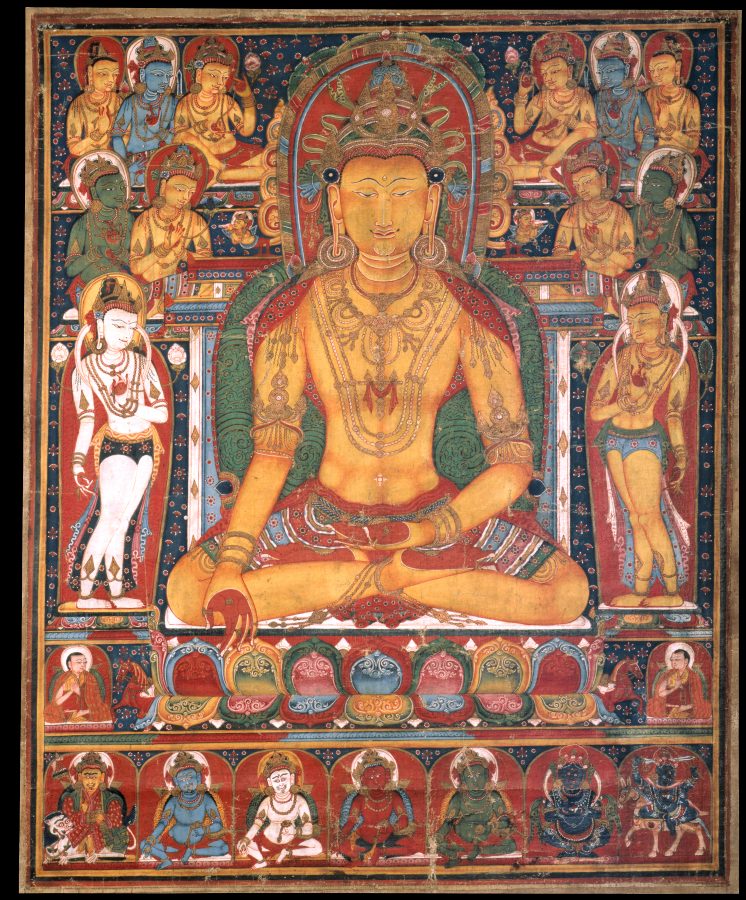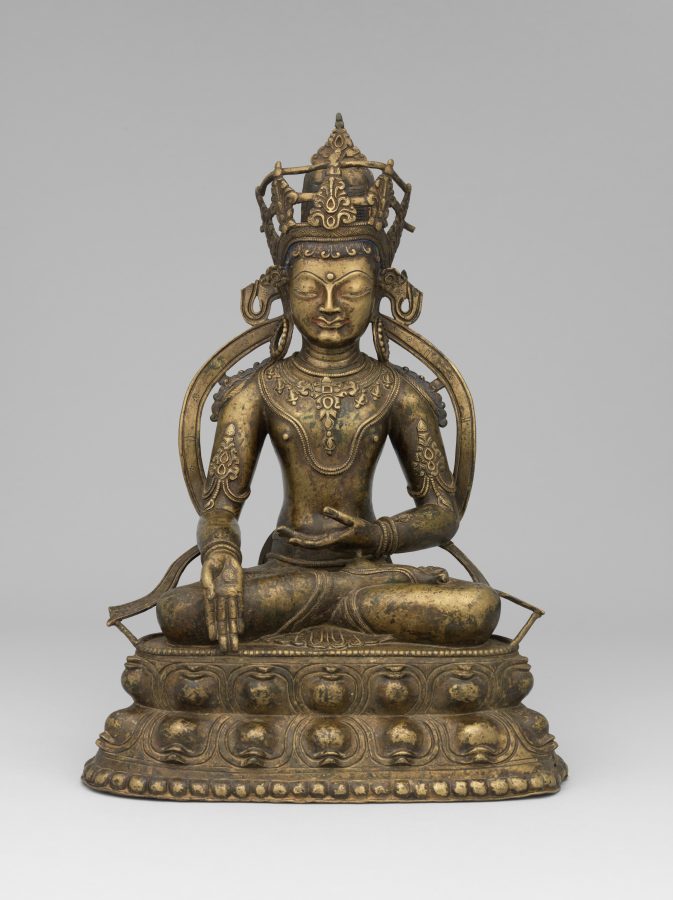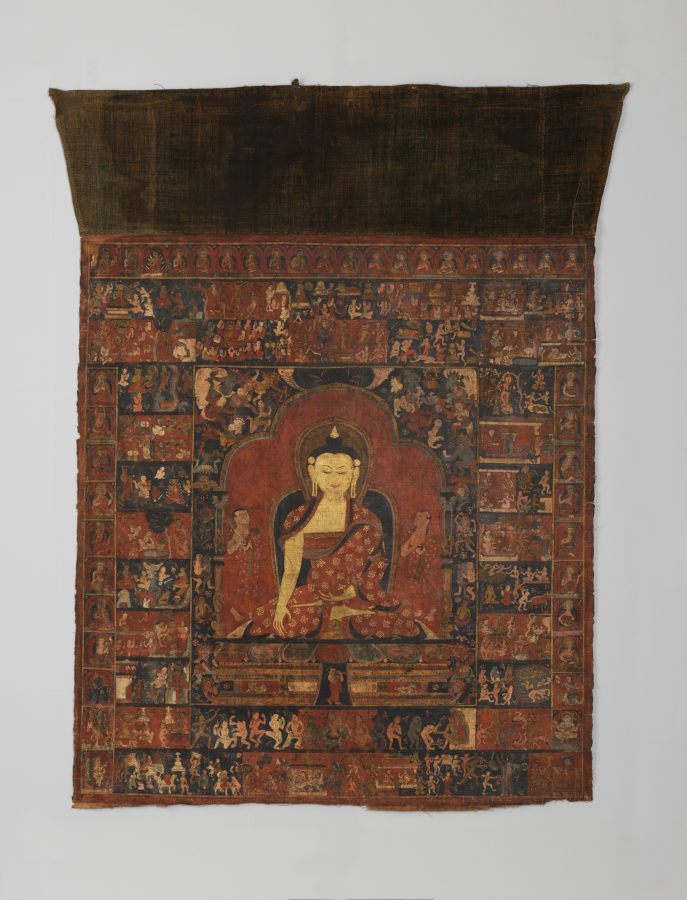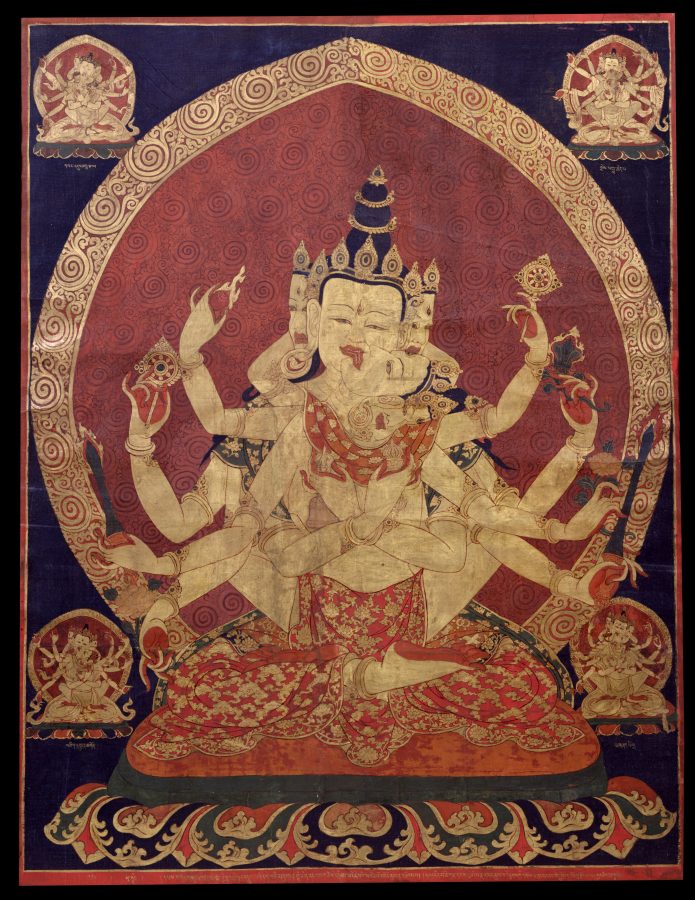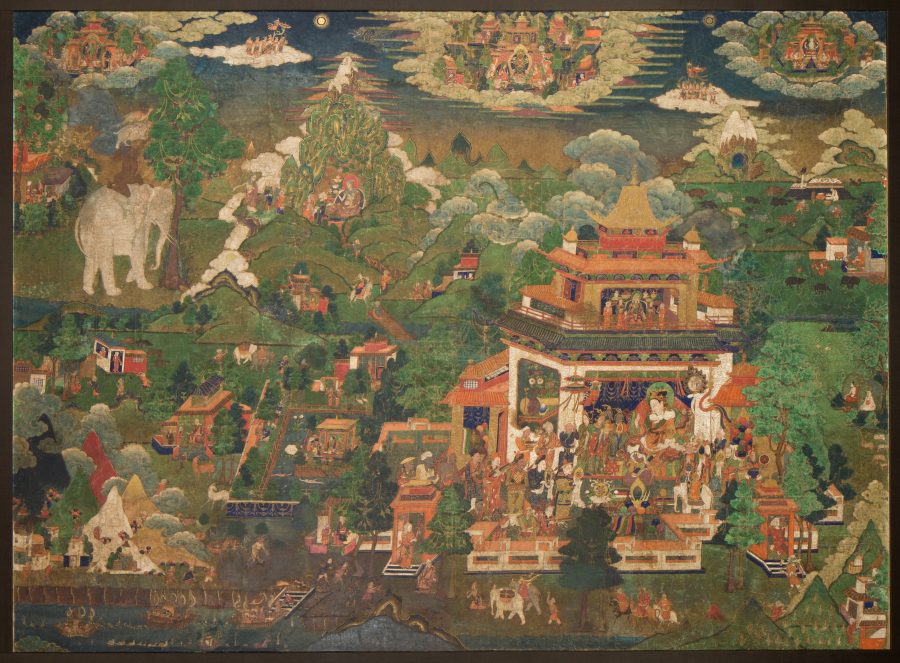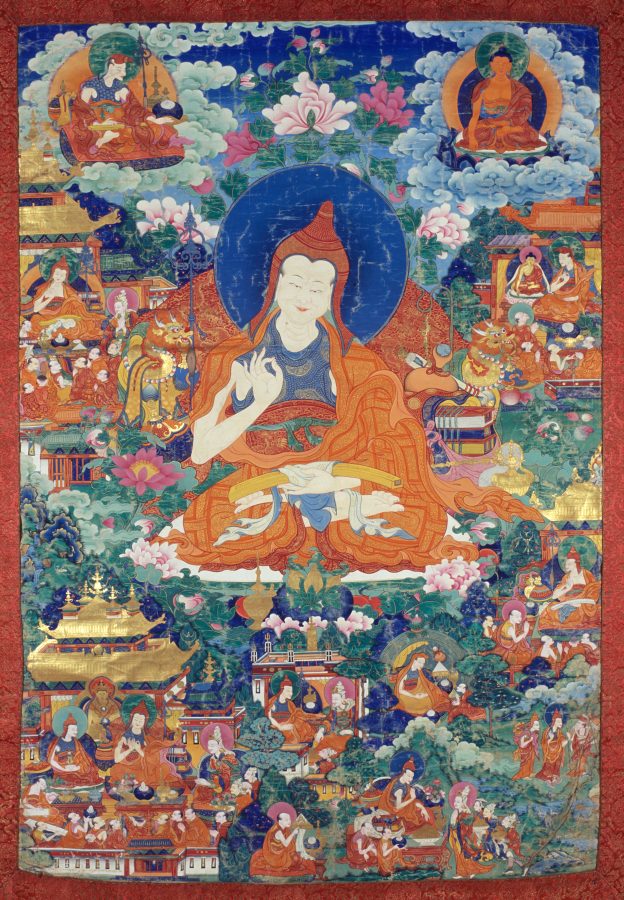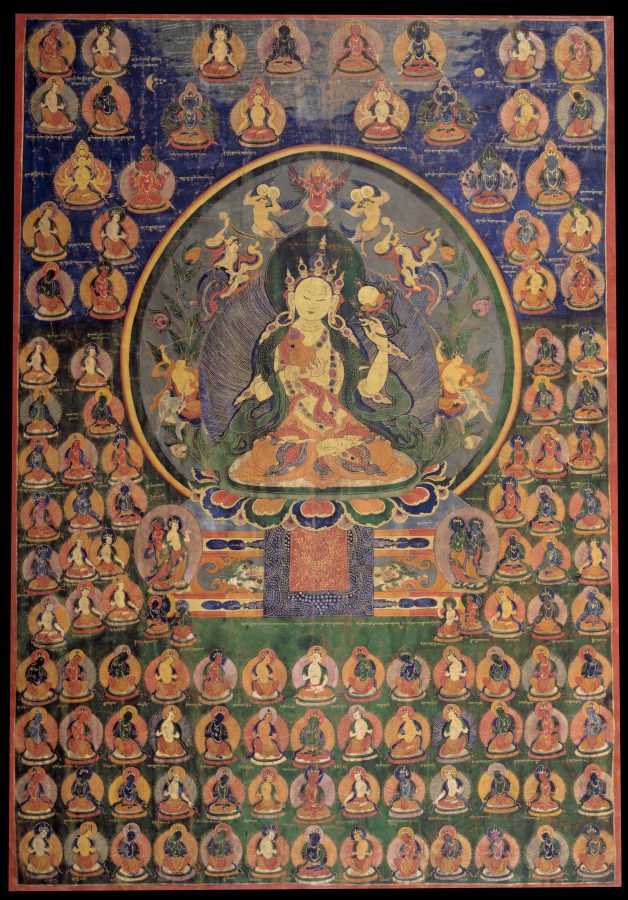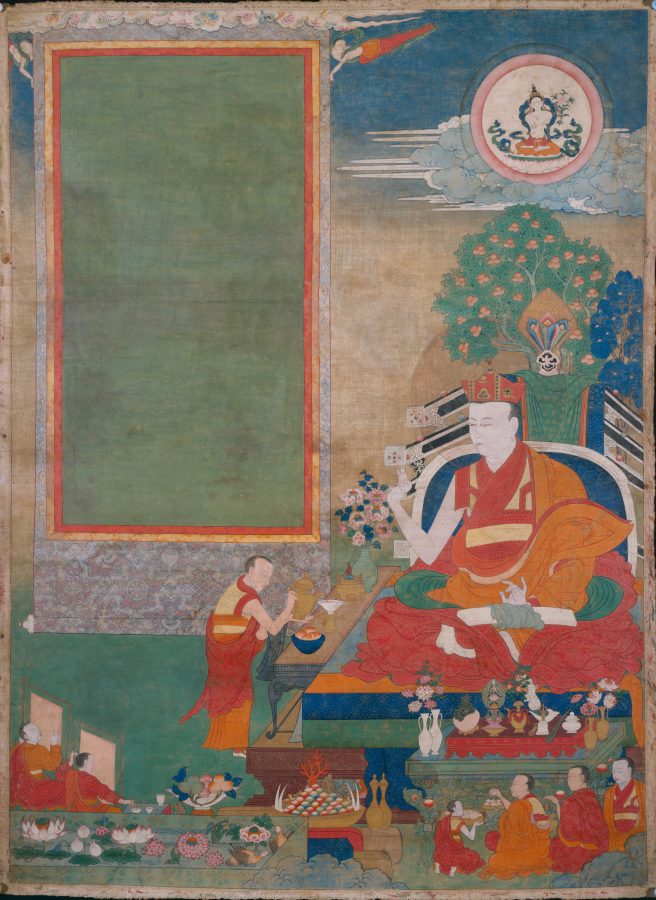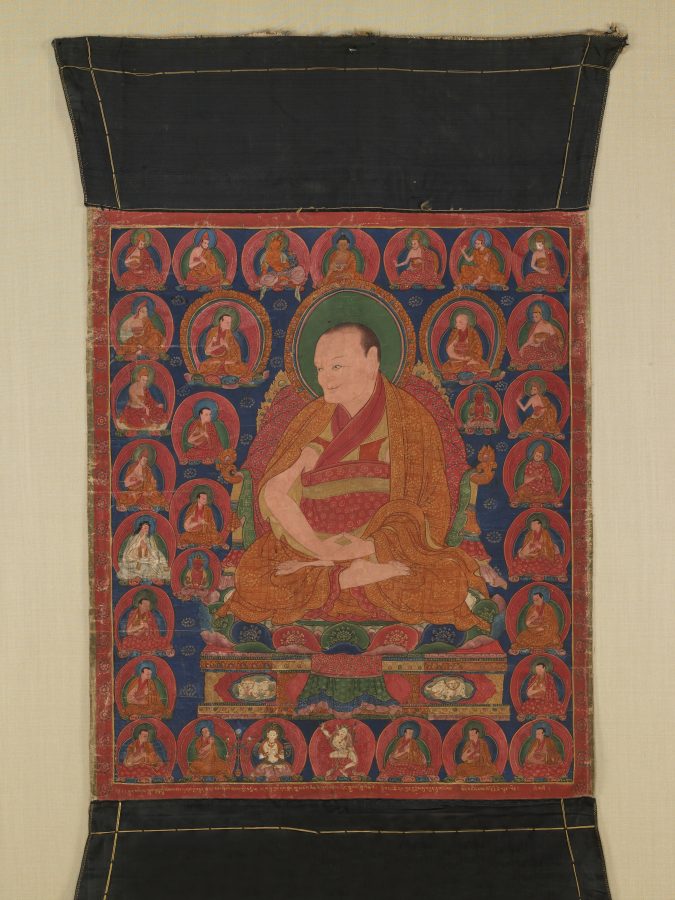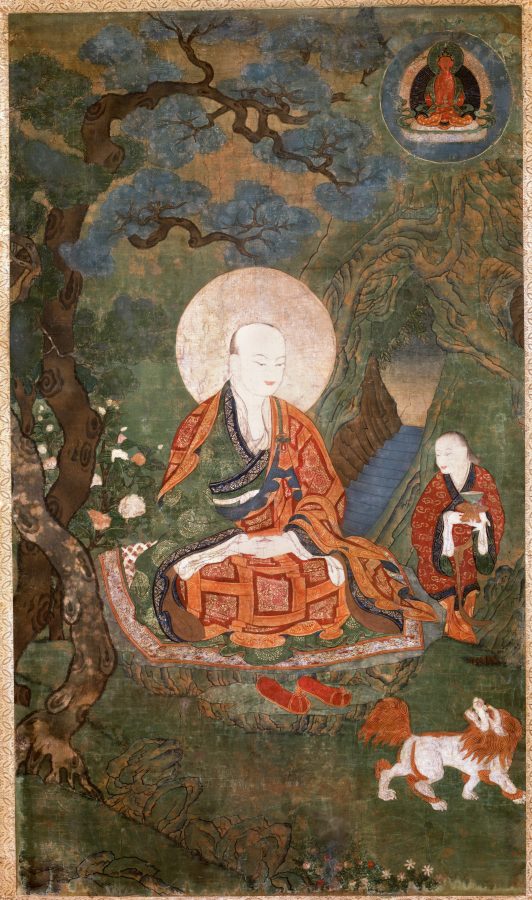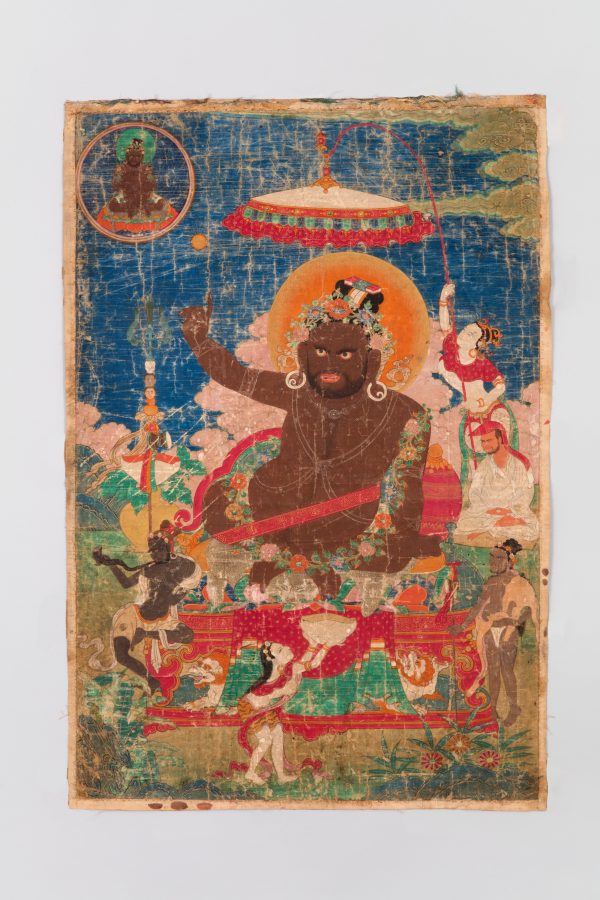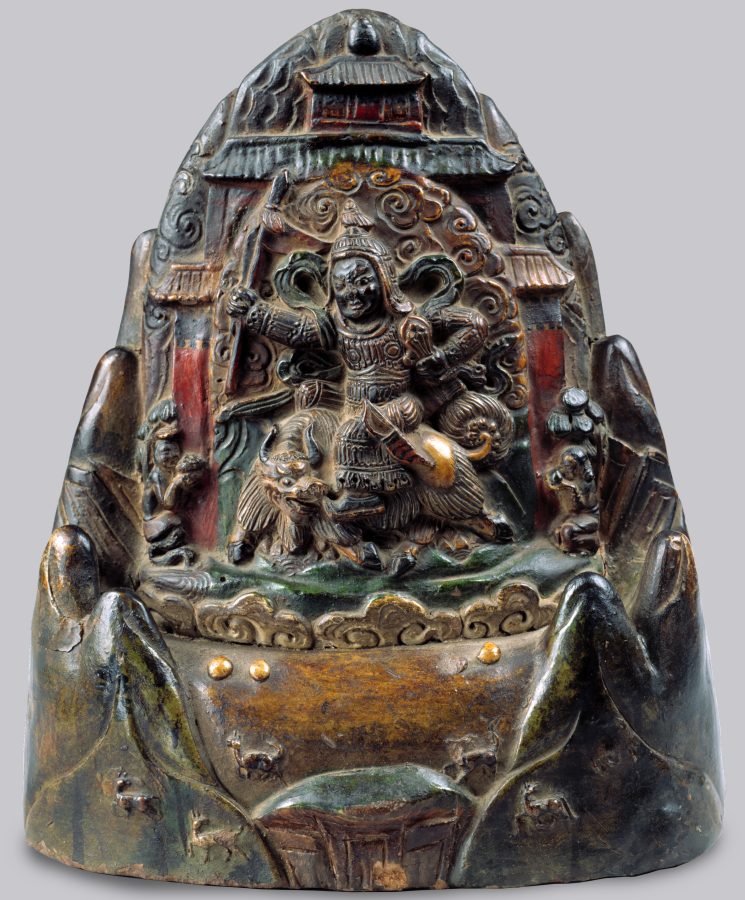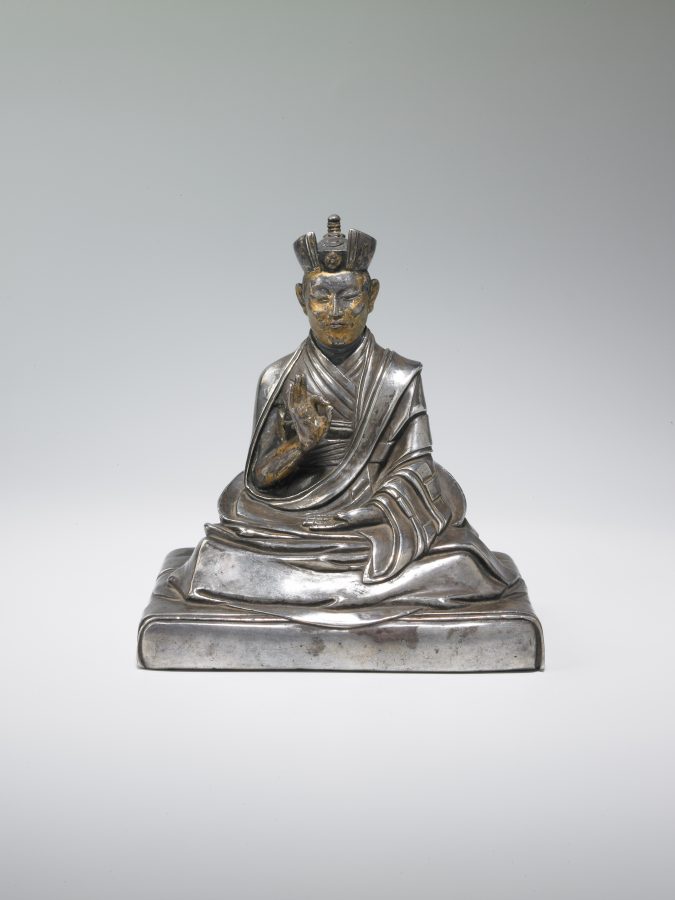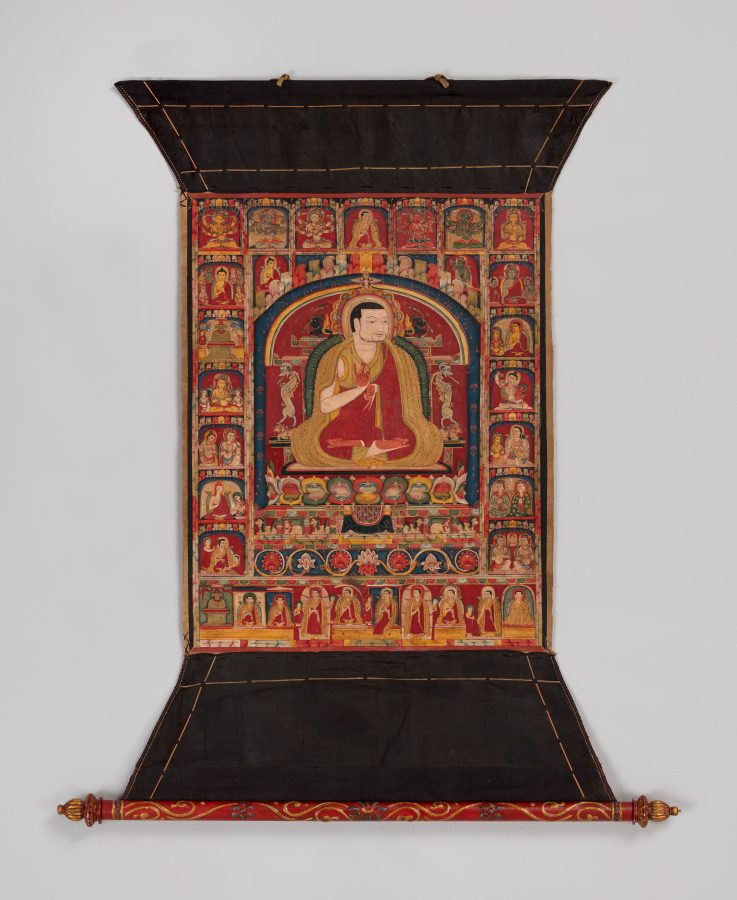Tenth Karmapa, Choying Dorje
Tibet
17th century
Rubin Museum of Himalayan Art
C2005.16.3a-b
Few Tibetan artworks can be attributed to a specific artist, and by far the most remarkable among them are those associated with the Tenth Karmapa, Choying Dorje (1604–1674). A renowned Tibetan artist and religious leader, Choying Dorje looked to a range of traditions, including Chinese art of antiquity for inspiration in his paintings and ancient metalwork from the regions of Kashmir and Swat for his sculptures. The fleshy lotus petals that make up Tara’s seat and the striated pattern on her tight-fitting clothing reveal this connection.
Aspects of the Tenth Karmapa’s personal figural style include the thick plates of hair piled on the left side of Tara’s head and the thick plasticity of her ornaments, such as her tremendous earrings and the bulbous bobbles of her necklace. The Karmapa often subtlety incorporated his love of animals into his works, as seen in the pair of birds nestled in a leafy bower above the goddess’s head.
See full collection record
Learn more about the art of the Tenth Karmapa


